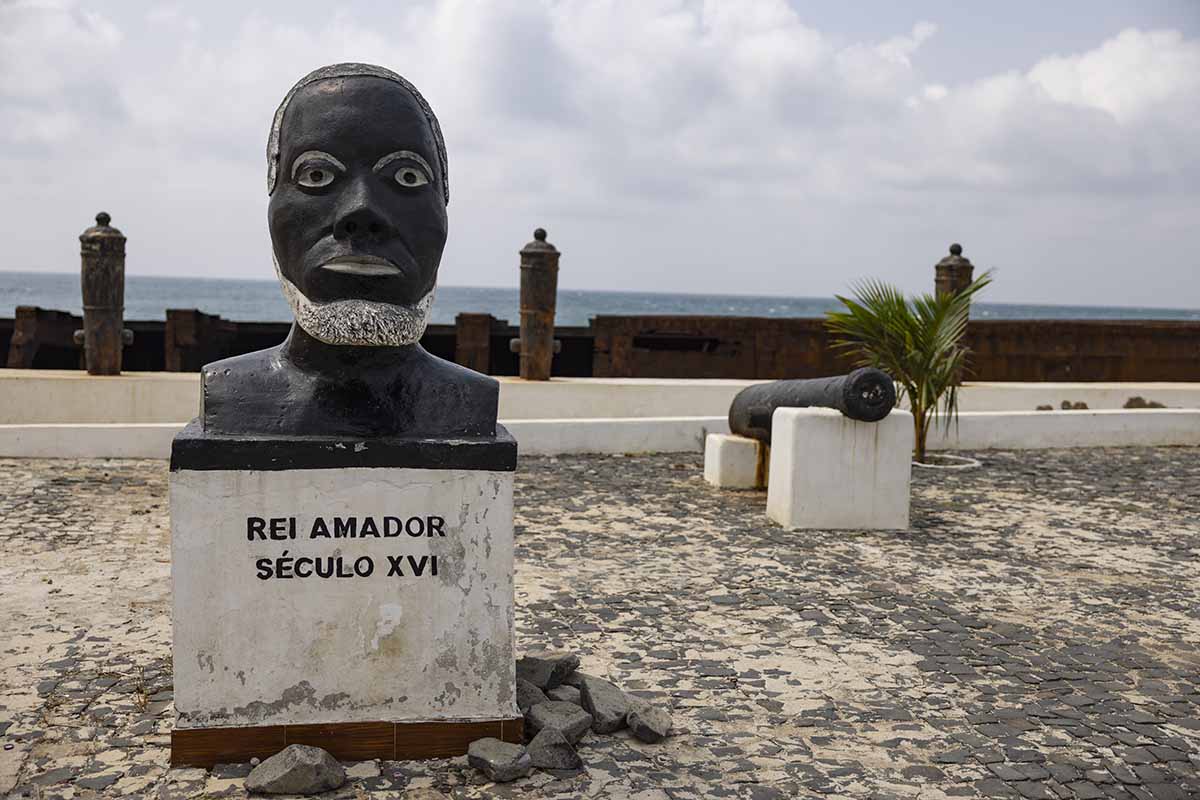One Day in Sao Tome City
Sao Tome and Principe holidays typically begin Sao Tome City.
Sao Tome City, the capital of Sao Tome and Principe, is a fascinating town virtually unknown to tourists. It offers visitors a unique blend of Portuguese colonial heritage, lush tropical scenery, and warm African hospitality. One of the smallest capital cities in Africa, it’s the perfect size to explore in just one day.
With just one day to explore, you Sao Tome City offers — from historic sites and bustling markets to scenic walks along the coast. In this comprehensive travel guide, I’ll take you through the perfect one-day itinerary to make the most of your visit to São Tomé City.
Sao Tome Hotels
Tourism is in its infancy in Sao Tome, but for visitors interested in Sao Tome and Principe holidays, there are still some decent hotels in the capital. Best of all, they’re extremely good value.
To maximise the time we have for our one day in Sao Tome City itinerary, my hotel of choice is the Hotel Central on Rua de Angloa.
This hotel, as its name suggests, is located in the heart of the city.
Decorated with African art, it has a cafe on the ground floor and is close to all amenities.
Hotel Kenito is a little further out of the centre, but benefits from larger rooms and a swimming pool. The staff are extremely friendly and helpful.
If more luxury is required, Pestana, Sao Tome is a 5-star resort with the associated amenities, including a swimming pool, dive school and spa. As the only true 5-star resort in Sao Tome, it is a favourite with business travellers. It is located close to Fort São Sebastião, which will be our first stop.
Morning: Explore Colonial Heritage and Local Culture
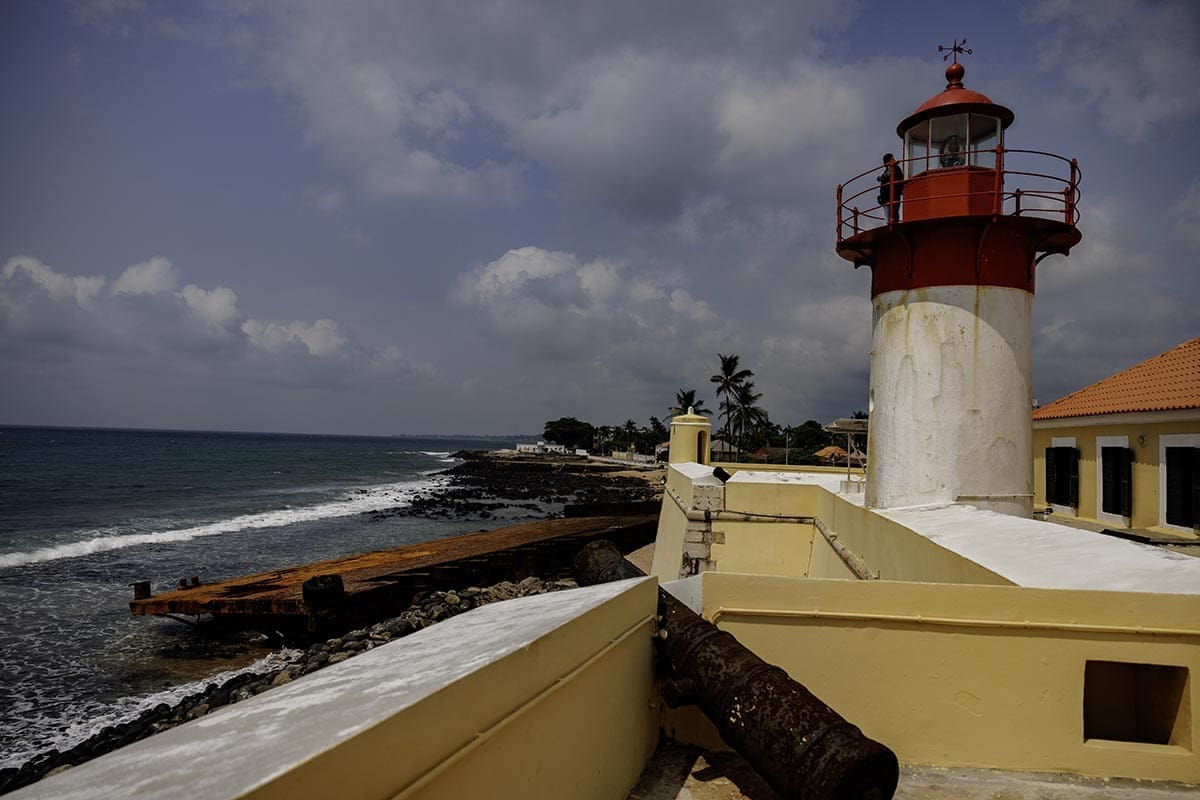
Fort São Sebastião and São Tomé National Museum
We’ll start our exploration of Africa’s second smallest capital city with a crash course in its history.
Fort São Sebastião houses the Sao Tome National Museum, a perfect starting point.
The strategic location of Sao Tome and the wealth it generated for Portugal made it a target for frequent French and Dutch attack. In response, the Portuguese built the fort in the 16th century on this strategic point.
Before paying the small (2 Euro) entrance fee, have a look at the statues which dominate the plaza in front of the museum. They represent three of the Portuguese navigators who discovered the island, Pedro Escobar, João de Paiva, and João de Santarém. Another statue commemorates King Amador, who led a slave revolt on the islands in 1595.
The pastel coloured fort is typical of the Portuguese colonial architecture seen around the city. The museum’s rooms house artifacts documenting the colonial influences on the island, but also focuses on its independence in 1975.
After looking through the museum, climb the ramparts for views of the bay and the Farol de São Sebastião (lighthouse).
I recommend hiring a guide for the museum, as all information is in Portuguese. I found an English-speaking guide at the entrance, but booking one beforehand may be better.
Spend about an hour here, soaking up the history and enjoying the peaceful surroundings.
Visit the Cathedral of Sao Tome (Sé Catedral)
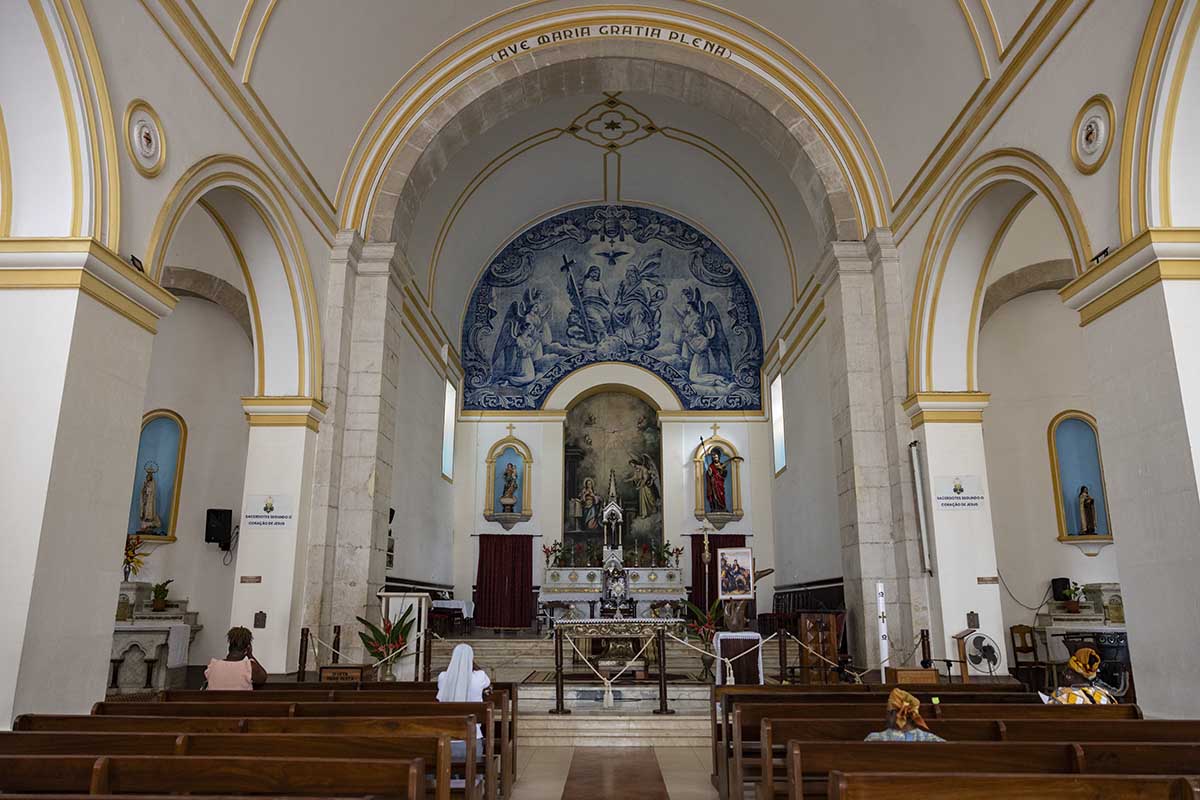
Our next stop is the Cathedral of São Tomé, Sé Catedral de Nossa Senhora da Graçe, the island’s most important religious site.
Construction started in 1499, making it one of the oldest churches in sub-Saharan Africa.
The cathedral suffered many catastrophes over the next 400 years. Pirates destroyed it in 1505, the Dutch raised it to the ground in 1562 and other attacks left it badly damaged. Sao Tomean legend says that “The island will sink beneath the waves if the cathedral is ever completed.” Work finally finished in 1958, and fortunately, Sao Tome is still here.
The interior features a typically Portuguese frieze of blue and white tiles. There are also paintings from Portugal, lovely stained glass windows, and a beautiful marble baptism font.
Wander Through Sao Tome’s City Centre and Independence Square
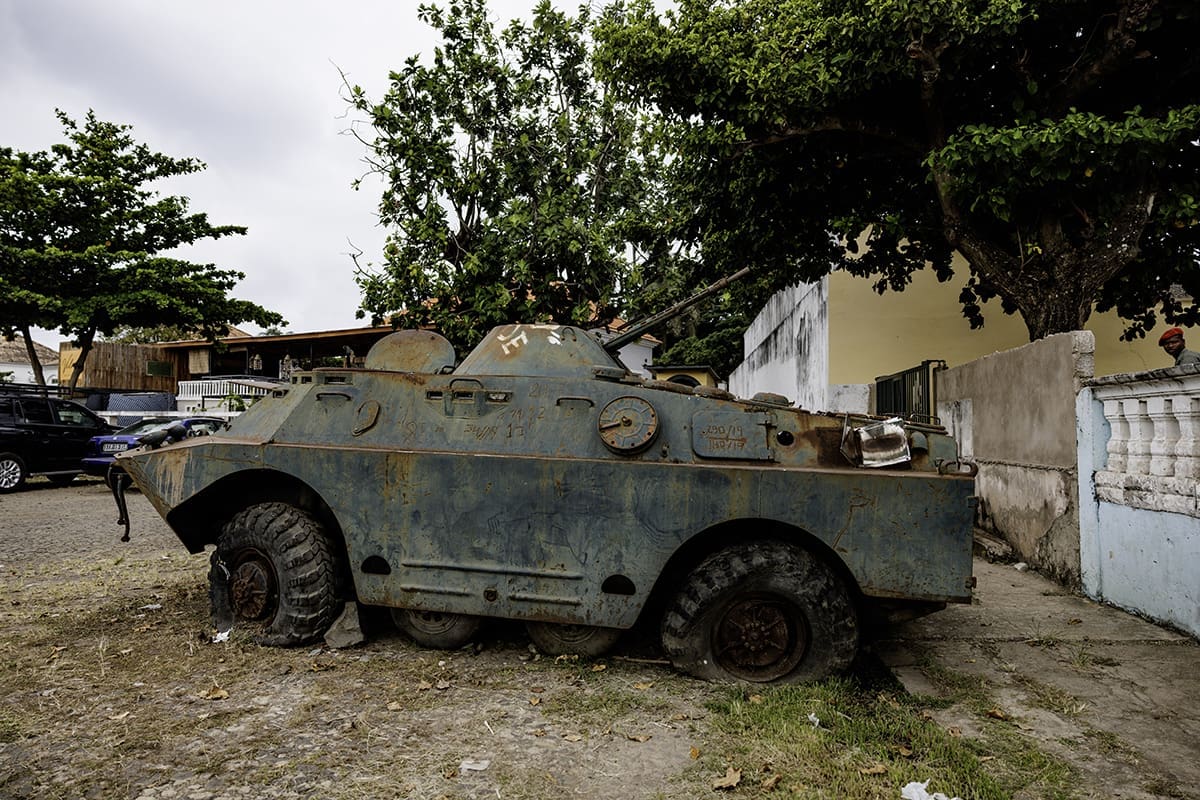
Opposite the Cathedral lies the impressive Presidential Palace. Guarded by uniformed soldiers, this is the official residence of the country’s political leader.
Be aware, the soldiers will be upset if you photograph any element of the Palace. I found a rusting tank in a side street, and a guard I hadn’t even seen shouted at me for taking a photo of it!
A few metres in the other direction lies one of the most important squares in the city. Praça da Independência (Independence Square). This is the spiritual heart of Sao Tome City and a gathering place for locals during celebrations.
Colonial-era buildings surround the square, and it contains a monument to Sao Tome’s independence in 1975. This includes the country’s coat of arms, which incorporates 2 birds, a falcon representing Sao Tome, and a grey parrot for Principe.
Coffee Break
This area also features some coffee shops and bars, so we’ll take a few minutes for a coffee break and some pastries at 90 Graus Esplanada Bar.
Late Morning: Immerse Yourself in Local Flavors and Crafts
Associo Pica Pau
I can guarantee that walking near the Associo Pica Pau craft collective will have you invited in. It’s an invitation worth accepting. Inside the small workshop, you’ll find a group of artists selling a variety of local crafts. Much of their work involves wood carving, particularly the hand carved tribal masks which are typical of the island.
Pica Pau (woodpecker) is a wonderful place for souvenir hunting, with good prices and sales directly benefit the artists.
Explore Sao Tome’s Central Market (Mercado Municipal)
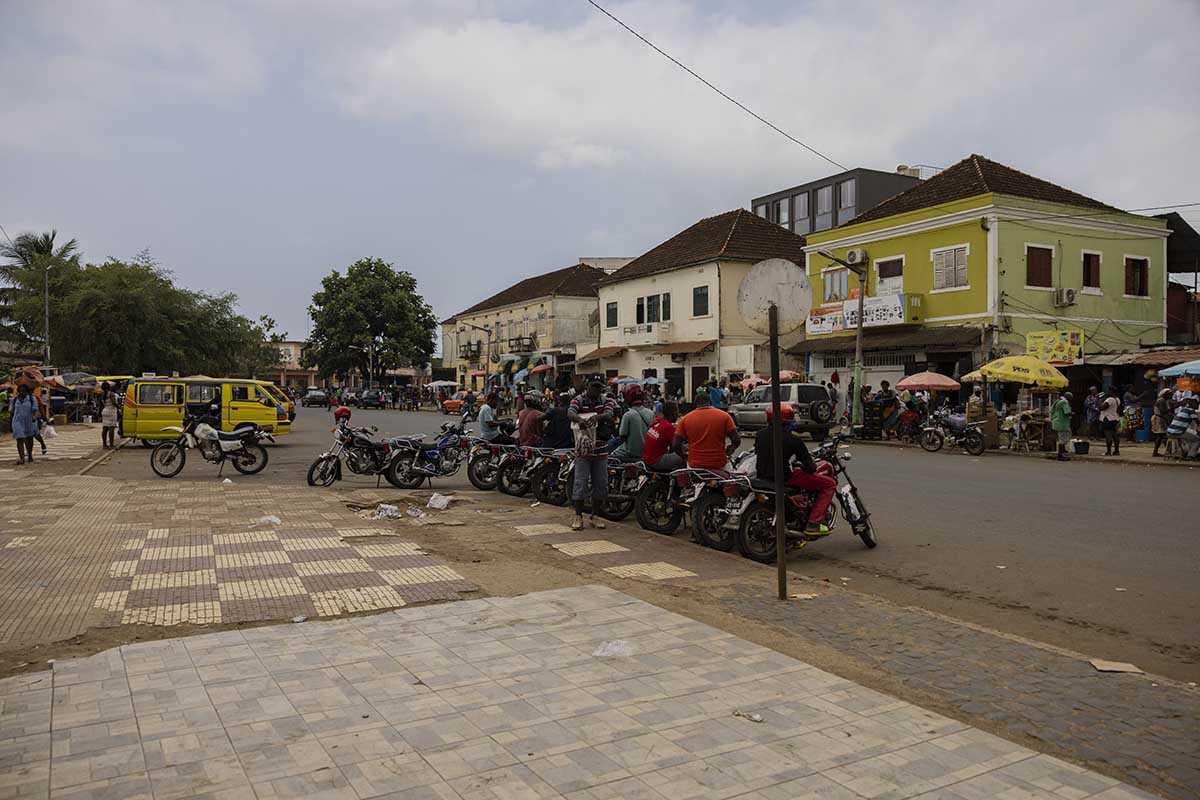
No visit to Sao Tome City is complete without a trip to the Central Market (Mercado Municipal). Close to the city centre, this lively market is a hub of activity where you can experience the sights, sounds, and smells of Sao Tome’s daily life. Vendors sell everything from fresh fruit and vegetables to fish, spices, and locally made crafts.
The market is a great place to interact with locals and discover the ingredients that form the basis of Sao Tomean cuisine. Be sure to sample some tropical fruits like papaya, mango, and bananas. Alternatively, try traditional snacks such as calulu, a popular dish made from fish, vegetables, and spices.
Money Changers
The currency of Sao Tome is the Dobra, which isn’t available outside the country. Very few establishments accept credit cards, and the ATMs don’t work with international cards, so cash is king. Hotels and some larger restaurants will usually accept Euros, but you will need Dobras for most purchases.
Most travellers to Sao Tome carry cash in the form of Euros or US Dollars. Hotels will sometimes change them, but often have limited local currency. Money Changers are a regular sight on the streets around the Central Market. They will swap your hard currency for local money. They offer the same exchange rate as the hotel (25 Dobra for a Euro in 2024).
As always, be aware of your surroundings when handling cash in a place where poverty is significant. I had no issues during several transactions with the street money changers, but always be careful.
To build up an appetite for lunch, we’ll take a leisurely stroll along Marginal Avenue, the city’s scenic coastal road. This stretch offers beautiful views of the Atlantic Ocean and Ana Chaves bay, with the lush greenery of Sao Tome in the background. Take care when walking and avoid the holes in the broken up concrete pavement.
Small fishing boats, beached before the next day’s fishing, line the shore. Key landmarks like the Fisherman’s Statue and the Fisherman’s Chapel make the importance of fishing to the island clear. Take a few minutes to watch the local fishermen mending nets and checking their boats.

Also, check out the many wrecks in the bay, which make for interesting photographs.
Lunch: Enjoy Traditional Sao Tome Cuisine

After a busy morning of sightseeing, it’s time to indulge in some traditional Sao Tomean cuisine for lunch. There are many excellent restaurants in Sao Tome City serving local dishes made from fresh, island-grown ingredients. One highly recommended spot is Onda Azul. A restaurant overlooking the Atlantic which specialises in the island’s excellent fish.
Start your lunch with an apéritif. Try their Caipirinha made with passion fruit, it’s exceptional!
Some must-try dishes include:
- Calulu: A fish or chicken stew made with vegetables, palm oil, and a blend of spices;
- Moqueca de Peixe: A tasty fish stew cooked with tomatoes, onions, coconut milk, and spices;
- Grilled Fish: Freshly caught fish, grilled to perfection and served with rice, beans, and plantains.
Afternoon – Enjoy the Scenic Coast & Nature
Visit a Chocolate Factory for a Sweet Treat

Sao Tome’s reputation for top quality chocolate is world renowned, and a visit to one of the island’s chocolate factories is a must for any chocolate lover. Claudio Corallo Chocolate Factory is the best of the best. It’s near our lunch spot, so it would be rude not to take advantage of its guided tours. Here we can learn about the entire chocolate-making process—from cocoa bean to chocolate bar.
During the tour, we will have plenty of tasting opportunities for some of the finest artisanal chocolate produced on the island.
Explore the Botanical Gardens (Jardim Botânico)

This afternoon, we’re going to check out Sao Tome’s extraordinary natural riches. The Botanical Gardens (Jardim Botânico) lie a short drive from the city centre.
These gardens showcase the rich biodiversity of the island. The wide variety of local tropical plants, flowers and trees attract many bird species. Sao Tome’ is the only place in the world to see species like Maroon Pigeon, Sao Tome Oriole, and Sao Tome Paradise-flycatcher.
The gardens feature some excellent hikes to walk off lunch and the chocolate factory.
Evening: Dinner
After an afternoon hiking the garden’s trails, head back into the city for dinner at Restaurante Exquizeat. This restaurant, near the Presidential Palace, is known for its cozy atmosphere, excellent service, and delicious Sao Tomean food.
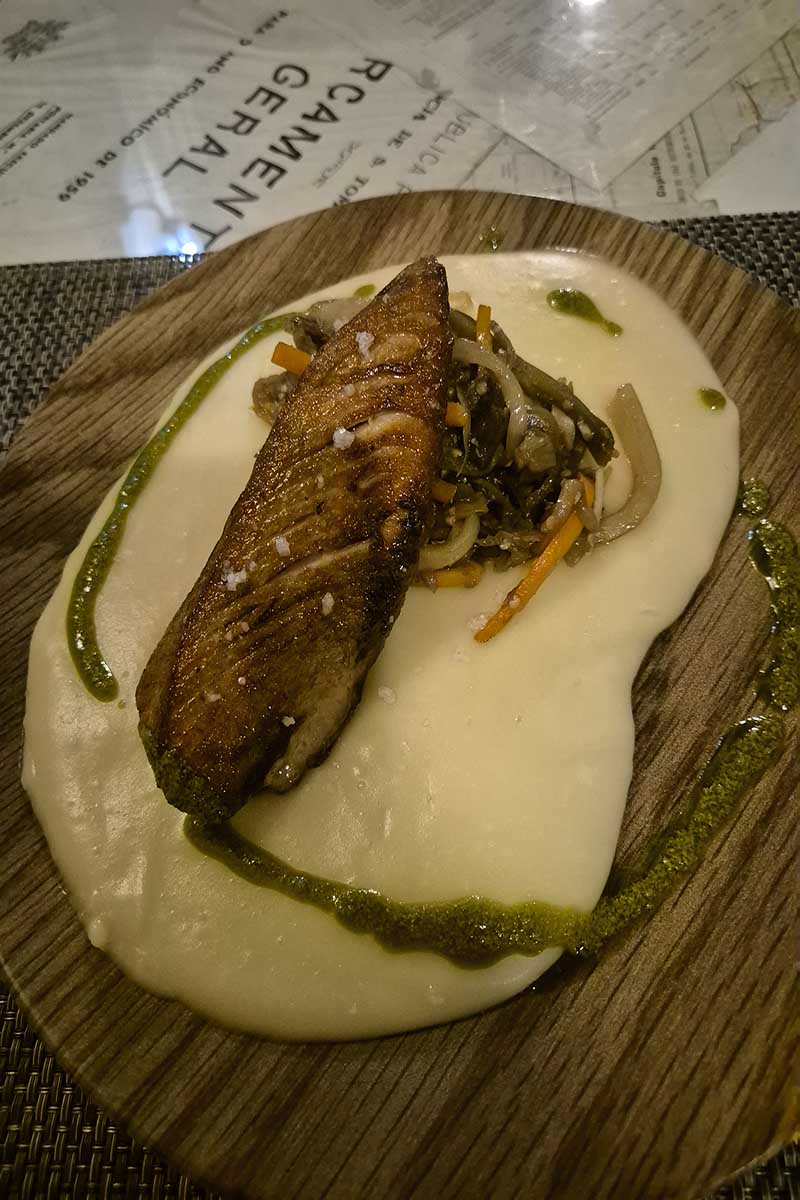
I thoroughly recommend the tuna on breadfruit with Provencal vegetables. For dessert, if you haven’t had enough chocolate, try the luscious chocolate mousse.
The restaurant’s outdoor seating area is the perfect spot to enjoy your meal while taking in the evening breeze. After a day of exploring São Tomé City, this is the perfect way to end your trip with a memorable dining experience.
Conclusion – One Day in Sao Tome City
Sao Tome City may be small, but it offers visitors a rich variety of experiences. It’s the perfect introduction to Sao Tome, tourists can delve into the island’s history, culture, and natural beauty. Whether you’re a history buff, a foodie, or a nature lover, Sao Tome City has something for everyone. This one-day itinerary ensures you maximise your time in the capital.
Related Posts

